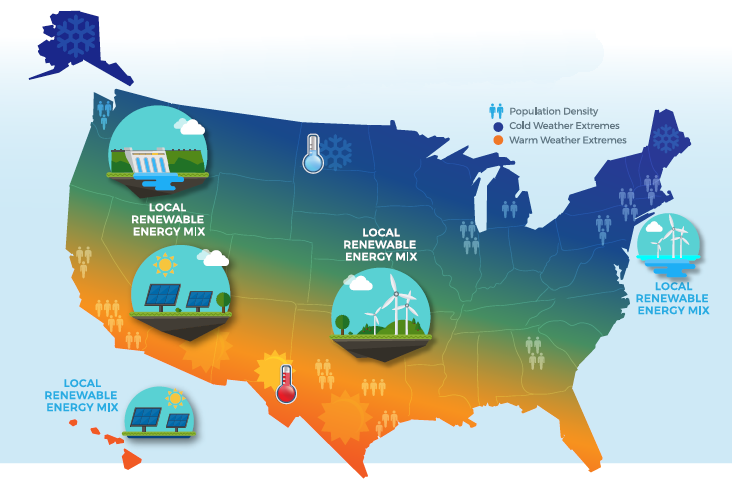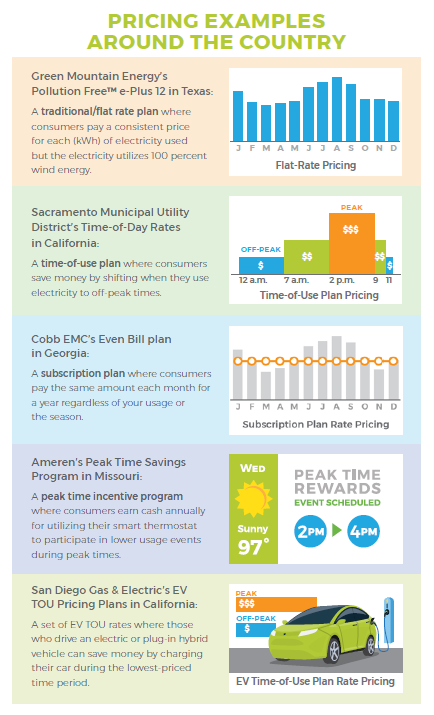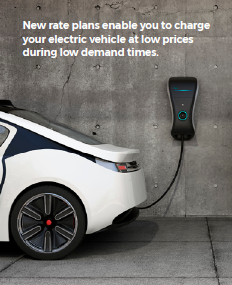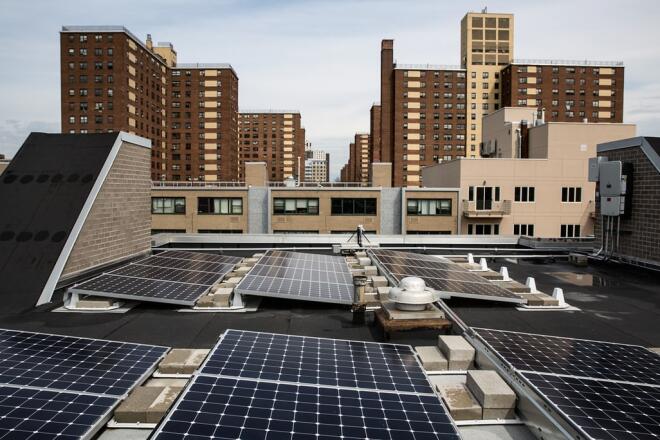
Exploring Your Power Pricing Options
Did you know that there are likely a variety of pricing options available for how you power your home? The smart grid has enabled power companies to give you options on how you pay for the electricity that your home uses, unlocking potential savings and plans that better meet your needs.

What influences power prices?
The average power bill for an American consumer is about $115 per month or a little over $1,350 per year. However, where you live has an impact on average power expenses — you could pay roughly $373 less each year by living in Utah or $448 more in Connecticut. Regardless, power bills can be a significant cost for consumers in all parts of the country, especially when you consider all the other bills you have.
Where do these prices come from? Power prices generally reflect the cost to build, finance, maintain and operate generation facilities and the electricity grid. The total cost includes fuel costs (nuclear, coal, natural gas and oil), power generation and facility costs (including maintenance of renewable energy resources), the distribution system to get the power to your home, weather conditions and government regulations.
The actual cost for your power company to supply your home electricity changes minute by minute based on prices in the energy markets and cost of demand and electricity production, which can vary based on the season, day and even time of day. Extreme temperatures also can drive a significant change in demand for electricity along with the price. For example, costs are usually highest in the summer due to more expensive generation sources being added to the grid to meet the high demand from air conditioning. As a result, sometimes the actual cost of providing electricity to your home is lower than the price you pay from your power company, and at other times, it is more expensive.
What power pricing options are available for me?
 Now that many areas of the country have smart grids in place with smart meters on homes, you may have the option to enroll in a variety of pricing plans that make it possible to save money by controlling how much electricity you use at different times of the day or week. By choosing when and how you use electricity, you can better manage your budget and even benefit the environment without sacrificing comfort and convenience. In addition, renewable energy, such as wind and solar, is increasingly being incorporated into pricing plans in many states.
Now that many areas of the country have smart grids in place with smart meters on homes, you may have the option to enroll in a variety of pricing plans that make it possible to save money by controlling how much electricity you use at different times of the day or week. By choosing when and how you use electricity, you can better manage your budget and even benefit the environment without sacrificing comfort and convenience. In addition, renewable energy, such as wind and solar, is increasingly being incorporated into pricing plans in many states.
Consider the fictional Rodriguez family, an average american family and with a variety of pricing options available to them:
 Traditional/Flat Rate
Traditional/Flat Rate
Think back to before unlimited plans for cell phones became prevalent — consumers paid a consistent rate per minute for calls or per gigabyte for data, which totaled a monthly bill. This method of pricing is the most common electric pricing plan for consumers today. The Rodriguez family would pay a consistent price for each kilowatt-hour (kWh) of electricity used — no matter when it’s used. Mrs. Rodriguez could lower their monthly bill by finding ways to reduce the amount of kWh the family uses in a month. This could be by being more disciplined with the thermostat, turning off lights or making energy-efficient upgrades.
This would be an ideal plan if… the Rodriguez family has a tight daily schedule and is unable or doesn’t want to shift the timing of their power consumption on major appliances or air conditioning.
Time of Use Rate
Think about buying a seat at a regular season baseball game during the week versus the same seat during a high-profile matchup on the weekend. The cost will be more during those premium games due to higher demand. This type of pricing is featured in time-of-use (TOU) rates where certain hours of the day are established as peak pricing time frames with a higher rate. Peak pricing times can be different in cold versus warm months. Typically, nights and mornings have much lower rates in the summer. These rates give consumers the opportunity to shift electricity usage to times where demand for electricity is lower, creating a win-win for the power company and consumer. In this case, Mr. Rodriguez could consider shifting electricity-intensive activities of the family, such running the dishwasher or washing clothes, to the non-peak hours of the day to reduce their bills.
This would be an ideal plan if… the Rodriguez family didn’t want to necessarily reduce their overall total consumption but instead have the ability to shift the time they do things like laundry, EV charging or running the dishwasher.
Subscription Plan
Similar to how you may pay a fixed monthly price for cable or internet access, your power company may offer comparable options. With a subscription plan, sometimes called an even billing plan, your power company provides you a monthly fee based on your electricity usage over the previous 12 months. This fee represents the average of all months’ usage with a possible buffer for excess usage. In this case, the Rodriguez family pays a fixed monthly price no matter the kWh of electricity used, possibly lower or maybe higher than their monthly charge. At the end of the year, Mrs. Rodriguez’s power company will offer a new 12-month contract based on that year’s usage. Some power companies require a settlement bill if the Rodriguez family uses too much (or too little) electricity, so they will want to read the terms of agreement to understand the plan.
This would be an ideal plan if… the Rodriguez family had a relatively consistent level of electricity consumption and want a predictable bill at the end of every month.
Peak Time Incentive Programs
Ever try to hail an Uber ride during a holiday night like New Year’s Eve? You might have noticed demand and prices were extremely high. The same thing occurs with the cost of electricity on extremely hot summer days or very cold winter mornings. Because extreme weather can strain the electric grid, some power companies offer rebates to reduce electricity usage during specific peak events. Mr. Rodriguez could earn a bill credit for turning off their pool pump, adjusting their thermostat or waiting to charge their electric lawn mower. Their power company may even have a program that does this automatically for them. These peak time programs can typically be paired with any of the rate options mentioned.
This would be an ideal plan if… the Rodriguez family is willing to reduce their electricity consumption on a few specific afternoons during the year.
 As you think about the available options, you could even consider more advanced options to take advantage of renewable energy sources and electric vehicles (EVs) to optimize your savings. Many power companies offer plans that only utilize clean energy sources to generate your power, and, in some cases, EV owners can charge at cheaper rates overnight by utilizing a TOU rate where the vehicle charging is delayed to start during periods when the lowest rates are available. You may want to also consider a prepay plan where you pay for electricity upfront and can monitor your budget closely each day.
As you think about the available options, you could even consider more advanced options to take advantage of renewable energy sources and electric vehicles (EVs) to optimize your savings. Many power companies offer plans that only utilize clean energy sources to generate your power, and, in some cases, EV owners can charge at cheaper rates overnight by utilizing a TOU rate where the vehicle charging is delayed to start during periods when the lowest rates are available. You may want to also consider a prepay plan where you pay for electricity upfront and can monitor your budget closely each day.
You can pair these different pricing plans with smartphone apps and automated “set-andforget” technologies, such as smart thermostats and smart appliances, to reduce or shift your electricity consumption. These technologies can automatically respond to power price signals and adjust your electricity consumption the easy way — without any action required from you.
Ultimately, what difference can my power pricing choice make for me?
The bottom line is that advancements in electricity grid technology are providing you with greater control over how electricity is used in your home. There are options available now to meet your needs whatever they might be. So, take advantage of these tools and reduce your costs. Consider signing up for an alternative pricing plan that meets your needs if available to you.
Download this fact sheet.



